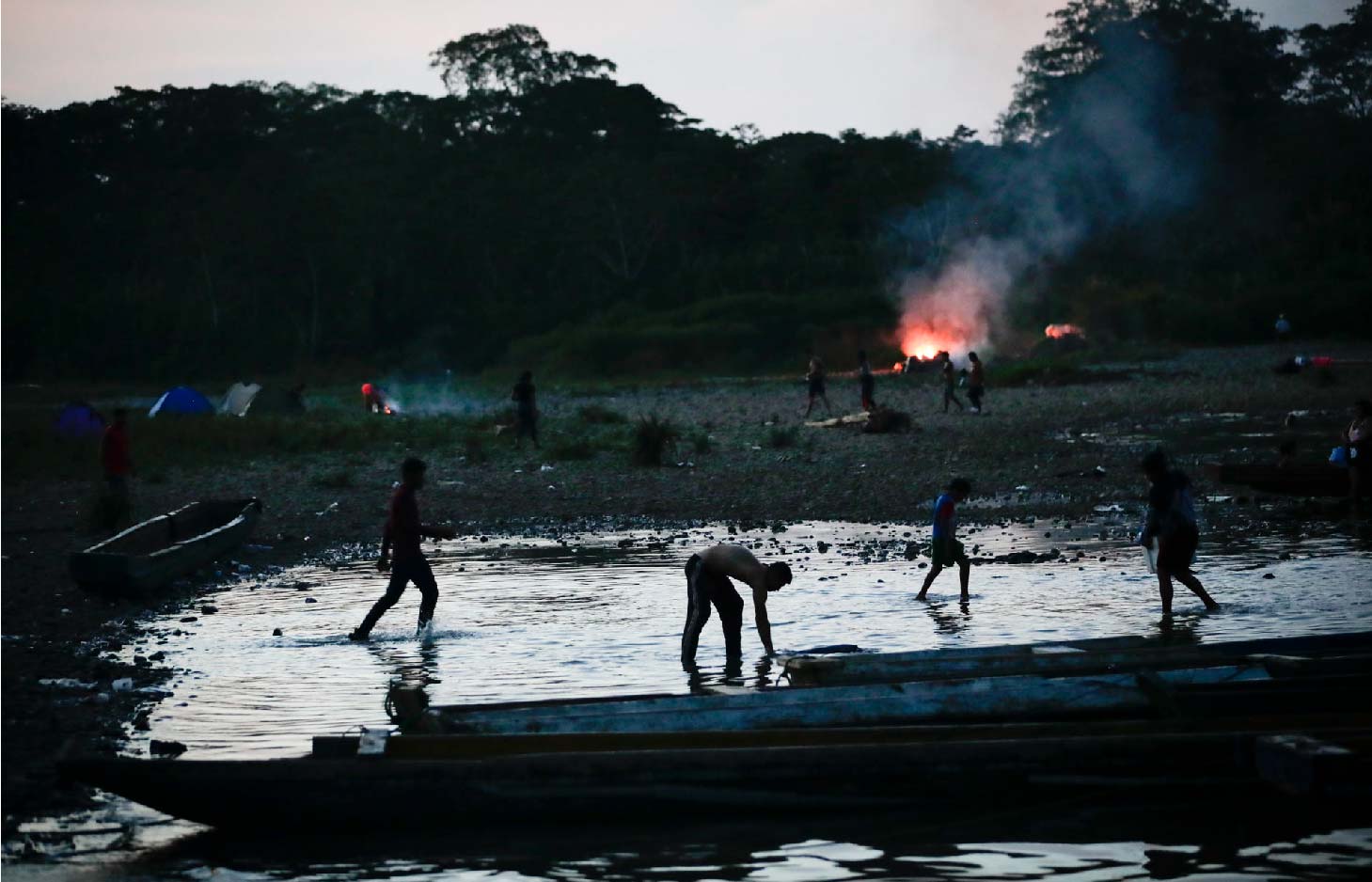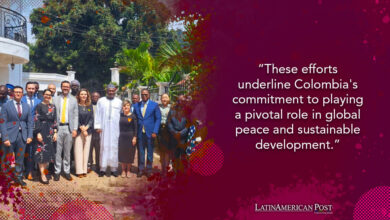Chronicle: This Is How Panama Experiences the Migration Crisis
Migration organizations can no longer cope in Panama, the migration crisis reaches record numbers .

Photo: EFE/ Bienvenido Velasco
Moncho Torres | EFE
Listen to this article
Leer en español: Crónica: Así vive Panamá la crisis migratoria
Panama cannot cope. It feels overwhelmed by the daily arrival of thousands of migrants in an irregular situation through the Darién jungle, which serves as a natural border with Colombia, on their way north. The queues last forever, for arrival registration, for transportation.
After having crossed the jungle for several days, with its muddy hills, rivers of sudden flooding and the threat of snake bites or robberies, the migrants arrive at the indigenous town of Bajo Chiquito, where the authorities register them.
The main street of this town of a few dozen wooden houses on the banks of the Tuquesa River is clogged by a long line of migrants, who wait for hours under the sun or the rain, among mud and garbage, for the Border Police to take their data, a fundamental requirement to follow their journey.
A handful of members of the National Border Service (Senafront) register the new arrivals and try to maintain some order among the pushing, calls for help and complaints that some sneak in by paying money to other migrants.

Photo: EFE/Bienvenido Velasco
"We can't cope, those guys don't rest. The only country that is doing this is Panama, counting them. At six in the afternoon they tell me that 2,890 arrived, but they go to bed at 2 in the morning, because of the 2,890 have to break down the nationalities and have to break down whether they are a minor or not a minor, if they have the documents," the highest authority of Senafront in the region, Commissioner Reinel Serrano, explains to EFE.
In addition to the general registry, biometrics are carried out on the suspects, given the possibility that criminals or terrorists may sneak in among the thousands of migrants of more than a hundred nationalities, with international search alerts.
Read also: "We Can't Keep Up": Doctors Without Borders Warns Of The Increase In Migrants In The Darién
According to official data provided by Panama, more than 385,000 people have crossed the Darién so far this year, a record number compared to 248,000 in all of 2022, the largest record to date. Furthermore, if the trend continues, Panamanian authorities already predict that it will reach 500,000.
Commissioner Serrano affirms that the problem is accentuated when the migrant does not have enough money to continue their journey north, which means that perhaps 1,000 who cannot continue join the 3,000 new arrivals, overwhelming the system.
"For now we have managed it at the limit level, but limit, because even for food sometimes it hurts (…) that we have to give to the wife and children, everyone comes hungry, they come without money because they were robbed, now sometimes there are 4,000 meals and 4,000 meals are not enough," he details.
Robbery in the jungle
Venezuelan Irma Navas has just arrived in Bajo Chiquito. She is desperate: "They robbed the three of us. Well, the three of us who came, because there were a hundred people who were robbed." It was near the river, where there were about five men armed with machetes and shotguns.
"I always watch the news, and it told me why people have to stay in Panama, bothering us, if we use it as a temporary route, but now I realize that one doesn't stay because they want to, brother, it's because they leave us without money," Navas laments to EFE.
They took $700 from her, and she claims that her group must have taken $15,000, $20,000. Commissioner Serrano explains that many of these criminals are people from the area, indigenous people who know the place and who have chosen crime. When they capture them, they carry dozens of cell phones and large sums of money.
And without money everything gets complicated. Bajo Chiquito is dedicated entirely to the migration business, where they charge for setting up your tent in a patio, eating, drinking, and recharging a cell phone. Also for the canoe transfer to Lajas Blancas, one of the immigration reception centers of the Panamanian authorities.

Photo: EFE/Bienvenido Velasco
Known by migrants as "the UN", in Lajas Blancas several humanitarian organizations collaborate with Panama to provide free support to migrants, but they are overwhelmed. United Nations agencies such as the International Organization for Migration (IOM) or Unicef are located there, as well as the Panamanian Red Cross.
So far this year, the Red Cross has treated some 31,000 migrants at its health posts in Lajas Blancas, 55,000 in the country's three reception centers, patients who arrive mainly with stomach problems, diarrhea, and wounds on their extremities.
"We can't cope and I think it's not (only) the Panamanian Red Cross, but all the agencies or organizations that are on the ground," the national president of the Red Cross, Elías Solís, acknowledged to EFE.
Everyone pays to advance
A group of mothers with half-naked children in Lajas Blancas are outraged. They want to make themselves heard, to make their problem known.
They want to continue the route north, towards the border with Costa Rica, but they do not have enough money to buy bus tickets coordinated by Panama, especially when the children pay the same as an adult: 40 dollars per person, because according to the authorities that includes insurance in case of accident.
Venezuelan Joelni Carolina travels with her three children, ages 14, 9 and 6. They were robbed in the jungle and have been waiting for eight days to be able to raise enough money to continue the trip. Their relatives in Venezuela, without resources, are trying to send a minimum of 300 dollars that the sending houses require, with a 20% commission.
"Nothing, we have to have money, because honestly no one told us to bring our children here, but those are someone's children and well, that's fine, it was someone's mistake, but they are already here, we can't expect them to die," Carolina, who never imagined so many obstacles on the route, their extreme hardness, tells EFE.




